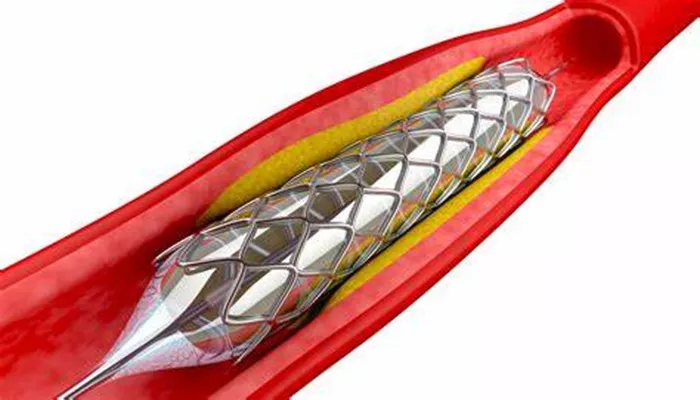Millions of people worldwide undergo percutaneous coronary intervention (PCI) each year to treat blockages in the coronary arteries that supply blood to the heart. The conventional treatment involves balloon angioplasty followed by the deployment of a drug-eluting stent (DES) to provide a scaffold and reduce the risk of restenosis.
While PCI with DES is highly effective, 2% of patients experience in-stent restenosis annually. The permanent metallic scaffold left behind by DES can distort the coronary vessel, impede adaptive remodeling, and promote chronic inflammation. This has fueled interest in alternative stent-free methods like drug-coated balloons (DCB).
Previous studies have shown DCB angioplasty to be as effective as DES for small vessel coronary artery disease (diameter ≤ 3.0 mm).
However, the long-term efficacy and safety of this strategy in broader coronary lesions remained unclear.
In a surprise finding, the first randomized trial to compare DCB and DES in previously untreated patients with non-complex disease found that DCBs did not outperform second-generation DES as expected. The RECCAGEFREE I trial enrolled 2,272 PCI patients from 43 sites across China between February 2021 and May 2022.
At two years, the primary endpoint of cardiac death, target vessel myocardial infarction, and clinically necessary target lesion revascularization occurred in 6.4% of DCB patients and 3.4% of DES patients, exceeding the non-inferiority margin.
This difference was mainly due to higher revascularization rates with DCBs (3.1% vs 1.2%).
However, subgroup analysis revealed significant variation in outcomes based on vessel diameter. While DES was preferable for larger vessels (diameter > 3.0 mm), DCB and DES showed similar results in small vessel disease (≤3.0 mm).
“Drug-coated balloon angioplasty failed to achieve non-inferiority compared to standard treatment with second-generation thin strut drug-eluting stents, mainly due to the need for more repeat procedures,” said senior author Dr. Ling Tao. “Our results show that the attempted strategy of ‘leave nothing behind’ by using paclitaxel-coated balloons in de novo non-complex coronary artery disease was disproven, and DES implantation should continue to be the standard of care for these patients.”
In conclusion, while DCB angioplasty has shown promise in small vessel disease, the RECCAGEFREE I trial found that DES implantation remains the preferred treatment for previously untreated non-complex coronary artery disease.


